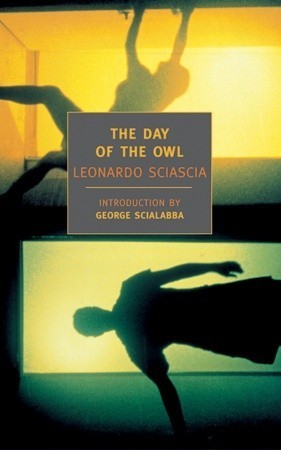
The Day of the Owl
Book Description
Darkness lurks in the corners of a quiet Sicilian town as an enigmatic murder shatters the peace, drawing the threads of power, crime, and silence ever tighter. Detective Salvatore Giuliano wades through a labyrinth of lies and conspiracies, where the Mafia’s grip tightens like a noose around the truth. As whispers of betrayal echo through the streets, loyalty is tested and secrets threaten to unravel lives. The stakes rise in a deadly game where everyone has something to lose. Who will emerge unscathed in this chilling tale of justice and retribution? Can the truth ever truly be revealed in a world consumed by fear?
Quick Book Summary
"The Day of the Owl," set in a small Sicilian town, follows the determined Captain Bellodi as he investigates the daylight murder of a local contractor. What begins as a seemingly straightforward case quickly entangles Bellodi in the invisible threads of Mafia influence. His pursuit of the truth is continually frustrated by a wall of silence, coded loyalties, and threats from the criminal underworld. Sciascia uses the police procedural framework to explore broader themes of power, complicity, and the struggles of individuals seeking justice within a corrupt societal structure. The novel is a portrait of post-war Italy's shadowy realities, challenging the reader to consider the price of silence and the pervasiveness of organized crime. Ultimately, it is a chilling meditation on the difficulties of exposing evil when its presence is everywhere and yet firmly denied.
Summary of Key Ideas
Table of Contents
Omertà: The Code of Silence
The novel opens with the murder of Salvatore Colasberna, a Sicilian contractor gunned down at a bus stop. Captain Bellodi, arriving from the mainland, is tasked with the investigation. Bellodi’s outsider status makes him both persistent and naïve as he faces the reluctance of locals to speak—a manifestation of the pervasive omertà, or code of silence. This silence is not simply fear but a social convention that makes the truth elusive, entrenching the Mafia’s hold on the community.
The Pervasiveness of Mafia Power
As Bellodi delves deeper, the Mafia’s presence becomes apparent not through open violence but subtle mechanisms of control. The town’s residents, officials, and even witnesses evade questions or offer misleading information. Sciascia uses these interactions to illustrate how organized crime infiltrates everyday life and how its power is maintained through quiet, insidious means rather than overt acts. The local authorities and influential townsfolk appear complicit or indifferent, highlighting the challenges for any earnest investigation.
Justice Versus Corruption
Despite mounting obstacles, Bellodi’s commitment to justice is unwavering. He pursues every tenuous lead, questioning suspects whose vague answers only spark new questions. Yet, each discovery situates him at odds with both the Mafia and the complacent state apparatus, illustrating how the ideal of justice is often an individual struggle, beset on all sides by corruption. Bellodi’s integrity serves as a contrast to the moral ambiguity that saturates the town, symbolizing the potential but also the limitations of law enforcement in such a society.
Moral Integrity and Courage
As the investigation progresses, political pressure intensifies. Officials from the capital, wary of exposing the true scale of the Mafia, seek to curtail Bellodi’s inquiry. The investigation becomes a microcosm of Italian society, revealing how institutional inertia and vested interests protect criminal networks. Allies become scarce, and threats mount. Bellodi’s outsider status is both his advantage and undoing; his refusal to yield ultimately places him at grave personal risk.
Societal Complicity
In the novel’s conclusion, the murder remains unsolved, and Bellodi is reassigned to the mainland, defeated but unbroken in spirit. Sciascia’s bleak denouement implies that justice may never be fully achieved in a world where silence is survival. The community returns to its routines, the Mafia’s grip unchallenged, and the cycle of complicity continues. Through "The Day of the Owl," Sciascia crafts a nuanced indictment of social and institutional apathy, raising enduring questions about responsibility and the nature of evil.
Download This Summary
Get a free PDF of this summary instantly — no email required.





